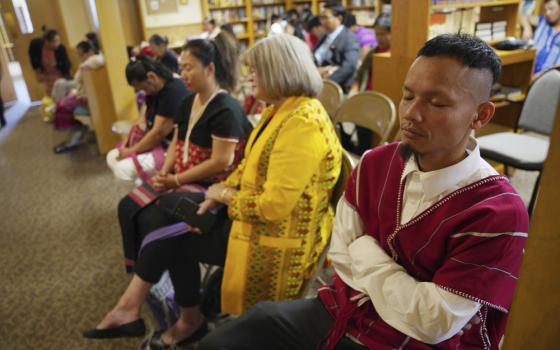Today is the feast of the Martyrs of Vietnam, including St. Andrew Dung-Lac, St. Jean-Theophane Venard, and 115 others.
Click here for some details of their lives, their torture, their writings, their deaths.
Among the savage methods of punishment were:
"Bá ?ao
100 Sabers, Death by 100 cuts: 1
L?ng trì
Dismemberment, Sliced into pieces until death: 4
Thiêu sinh
Burned Alive: 6
X? tr?m
Beheaded or Decapitation: 75
X? gi?o
Death by Strangulation, squeezing the neck by pulling the two ends of rope: 22
R? tù
Death by lifetime imprisonment: 9"
Mandarins and Martyrs: The Church and the Nguyen Dynasty in Early Nineteenth-Century Vietnam, by Jacob Ramsey, gives the historical and political context of one period of conflict between the Nguyen court and the Missions Étrangères de Paris (MEP), the group to which St. Jean-Theophane Venard and nine other martyrs belonged.
The example of Venard inspired Therese of Lisieux to volunteer for the Carmel at Hanoi, although her failing health made that impossible. As her life neared its end, she copied and paraphrased writings of Blessed Theophane onto a card for her sisters. She also attached pictures of Jesus, Mary, Joseph, St. Cecelia, and her brothers and sisters who died before she was born to a picture of Blessed Theophane and pinned it to the curtain on her bed in the infirmary. Photographs of the card and the pictures may be seen in Therese and Lisieux by Pierre Descouvemont and Helmuth Nils Loose.
The government of Hanoi was not pleased with the Vatican's decision to canonize the martyrs in 1988.
Church state relations have improved in recent years, but are still sometimes shaky: Dark cloud hovering the grand opening ceremony of Holy Jubilee in Vietnam



